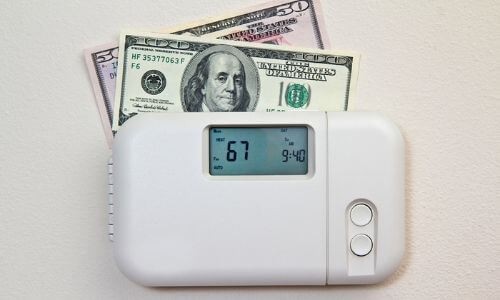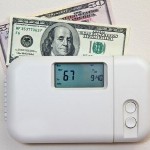Choosing The Best Thermostat Settings For Each Season
Many homeowners have a “don’t touch the thermostat” rule in their homes. Though this may seem unfair at times to others living in the household, there are actually some very good reasons behind the rule. Setting the thermostat to the optimized temperature in the winter and summer can have many benefits that are not always apparent.
Not only that, homeowners will extend the life of their heating system, reduce their carbon footprint, and increase their indoor air quality. All of these things can be achieved by setting the thermostat to the correct temperature for the particular season.
There is also something to be said for setting the thermostat to optimal temperatures when you are not home, and when you are asleep. Both of these actions can also reduce energy costs and help keep the heating system performing at it’s best.
The Best Thermostat Temperature For The Cold Months
During the fall and winter season, the best thermostat temperature is 70 degrees Fahrenheit. Although, this is just an average, and a few degrees up or down is also optimal. While some residents may feel this is slightly too cold, it’s actually recommended that people wear layers as a way to keep warm.

This is better for the body versus living in a hot home or wearing one very warm piece of clothing. Doing both can actually raise your core temperature making you overheat. Just like you, your heating system can also overheat if the strain is too much. Keeping your temperature at an even keel makes the system less likely to burnout.
The Best Thermostat Temperature For Warm Months
 Conversely, the best thermostat temperature for the summer and spring months is 78 degrees Fahrenheit. As mentioned above, is this the optimal temperature to keep your energy bills low, your HVAC system working well, and your indoor air quality at a good level.
Conversely, the best thermostat temperature for the summer and spring months is 78 degrees Fahrenheit. As mentioned above, is this the optimal temperature to keep your energy bills low, your HVAC system working well, and your indoor air quality at a good level.It also recommended by experts that you lower the temperature by 5 to 8 degrees while you are asleep. This is actually true for both the cold and warm months. Consistently lowering your thermostat for at least eight hours each night can reduce your heating/cooling bills by about 1% for each degree it is lowered/or higher.
Though this is only true if it is done for at least an 8-hour span. It is also important to note that cooling your home takes roughly the same amount of time regardless of the temperature you set your thermostat.
For example, if you come home to a warm house, many homeowners believe setting the thermostat to the lowest point will cool the home quicker. This is not true. If the thermostat is set to 75 degrees, it will get to that point whether you set it at 75 or 60 degrees. Setting it lower can actually cost you more in energy costs, as well.
Thermostat Settings For An Empty House
The optimal thermostat settings above are the best temperatures for your home during the day. They are set within these limits because typically the house is empty during the day. Many homeowners who are in residence during working hours still prefer to keep their thermostat set to these temperatures anyway to keep their energy costs low.

During the summer and winter months, homeowners tend to either lower or increase their thermostat for the evening hours. Keeping the setting at 70/78 degrees during the day, allows the heating system to ease into the homeowner’s preferred temperature without working too hard. This also helps keep the bills low and the carbon footprint low too.
Boutwell’s Air Masters
Setting the best thermostat temperature has become easier for homeowners with the growing popularity of smart thermostats. Boutwell’s Air Masters are experts in the Pensacola, FL area. Serving the community since 1973, they are ready to assist you with all of your heating and cooling needs.













